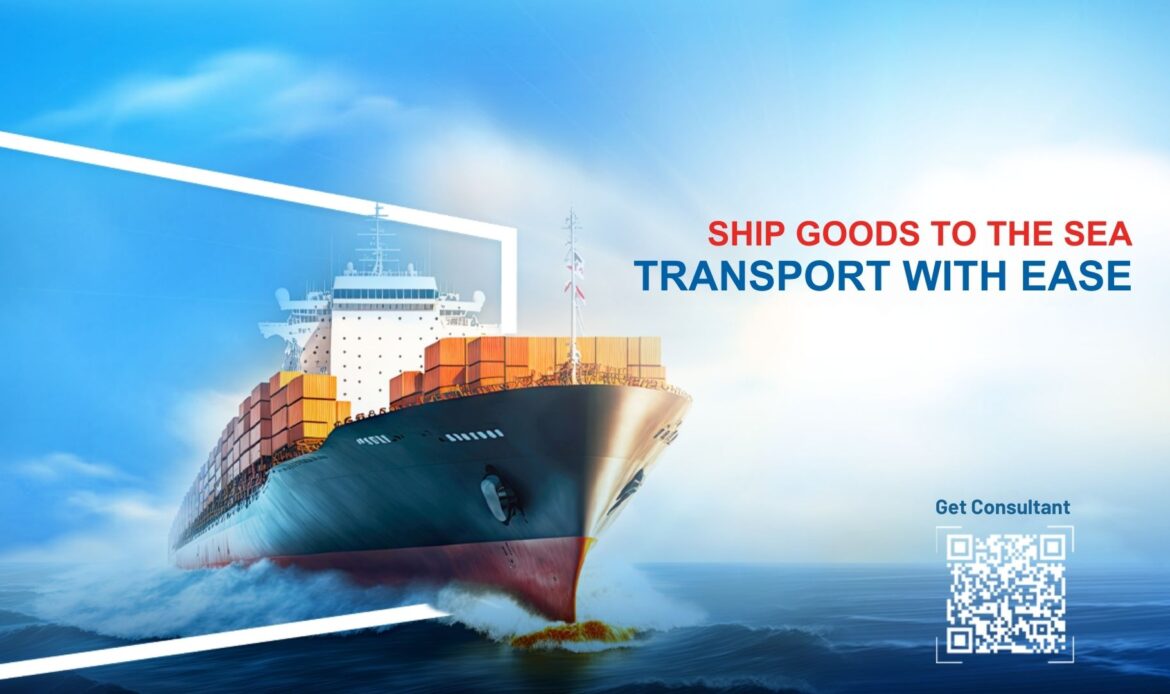Unlocking the potential of domestic transportation by sea

Domestic transportation by sea refers to the movement of goods via rivers, canals, and waterways within a country’s borders. Vietnam boasts over 2,360 rivers of various sizes, spanning a total length of nearly 41,900 km, including key inland waterway routes such as the Red River and the Mekong River.
However, only a small portion of the inland waterway system is currently utilized for freight transport, leaving much of its potential untapped.
Domestic transportation by sea with High Capacity Potential
With a rich network of rivers, inland waterway transport has the potential to become a crucial link in the Logistics supply chain. Major waterways like the Mekong, Dong Nai, and Red rivers not only connect inland areas but also serve as important gateways to major seaports.
Yet, the infrastructure of most rivers in Vietnam remains underdeveloped, lacking adequate connections between seaports, docks, and transportation systems. This limits the efficiency of inland waterway transport, which primarily caters to bulky, heavy goods and fails to meet the diverse transportation demands of the modern economy.
Lower transportation costs but underutilized
One of the main advantages of inland waterway transport is its significantly lower cost compared to road and air transportation. Studies show that water transport can reduce fuel costs by 40-50% compared to road transport, especially when handling heavy and bulky goods. However, due to underdeveloped infrastructure and inefficient integration with other transport modes, inland waterway transport struggles to compete with other methods in terms of delivery speed and flexibility.
Potential for developing inland ports
Vietnam’s riverside ports still lack coordinated and modern investments. For inland waterway transport to truly thrive, it’s essential to develop ports that are seamlessly connected with road, rail, and even international seaports. Currently, areas like the Mekong Delta and the Red River region face challenges in developing port infrastructure, hindering the efficiency of goods handling and reducing the overall effectiveness of the supply chain.
Reducing pressure on road traffic
Vietnam’s road traffic is facing increasing congestion, overload, and pollution. Developing domestic transportation by sea would not only alleviate the strain on roads but also provide a green solution by reducing CO2 emissions. This aligns with Vietnam’s sustainable development goals for the future. However, realizing this vision requires collaboration between government policies and private enterprises to invest in infrastructure, technology, and workforce development for the inland waterway sector.
Strengthening regional connectivity and supporting exports
Regions like the Mekong Delta, a key hub for agricultural exports, require efficient transportation solutions to connect with major seaports such as Cat Lai, Thi Vai, and Cai Mep. Inland waterway transport can be an ideal solution for moving goods from rural areas to major urban centers and international seaports. With the growth of agricultural exports and consumer goods, inland waterway transport will play a vital role in ensuring a sustainable supply chain from production to distribution.
Proposals for developing domestic transportation by sea
In the context of Vietnam’s extensive but underutilized inland waterway network, VELA is actively promoting the development of this sector and is committed to supporting its sustainable growth through specific solutions.
-
- Investment in port infrastructure and transportation connectivity
The lack of coordinated infrastructure is a major obstacle for domestic transportation by sea. Therefore, proactive projects to build and upgrade infrastructure at strategic locations, connecting with road and rail systems, will help reduce transport times and optimize Logistics efficiency.
-
- Smart ports: implementing smart port technology, automating cargo handling, and real-time tracking of goods to minimize risks and waiting times.
-
- Multimodal connectivity: ports should not only serve water transport but also integrate with road and rail systems, ensuring smooth and rapid cargo transfer.
-
- Training and enhancing the Logistics workforce
Building a skilled workforce in the Logistics supply chain, especially in inland waterway transport, is crucial. It contributes to delivering specialized consulting solutions and the best services to customers and partners.

-
- Encouraging inland waterway transport through incentive policies
To motivate businesses to choose inland waterway transport, proactive cost-optimization solutions such as tax incentives can help reduce the financial burden on businesses transporting goods by waterway.
-
- Promoting tax, port fee, and transportation cost incentives, making inland waterway transport a more attractive option compared to other modes. This, in turn, optimizes resources and reduces Logistics costs for businesses.
-
- Digitization and automation of transport processes
Applying digital technologies to optimize the entire inland waterway transport process is essential and crucial in today’s era of comprehensive digital transformation. This not only reduces operating costs but also increases transparency and improves cargo tracking capabilities.
-
- Process digitization: implementing intelligent management systems allows businesses to track cargo status, routes, and accurately predict delivery times through an online platform.
-
- Operational automation: automating processes such as cargo handling and management reduces reliance on labor, increases productivity, and minimizes risks.
-
- Enhancing international cooperation
Expanding collaboration with international partners in the inland waterway transport sector, from shipping companies to major ports and Logistics research and development organizations, can bring cutting-edge solutions that help optimize costs. Additionally, sharing experiences in efficient supply chain management is highly valuable for all businesses through these connections.
-
- Linking with international ports: connecting with major international ports to optimize shipping routes and expand international trade opportunities for Vietnamese businesses.
-
- Technology transfer: introducing the latest technologies into inland waterway transport processes, from warehouse management systems to port automation, to strengthen collaboration with international partners.
Domestic transportation by sea is a potential mode of transport that many Vietnamese businesses should fully exploit. With lower costs, large cargo capacity, and environmental friendliness, inland waterway transport helps businesses optimize their supply chains and minimize negative environmental impacts.
